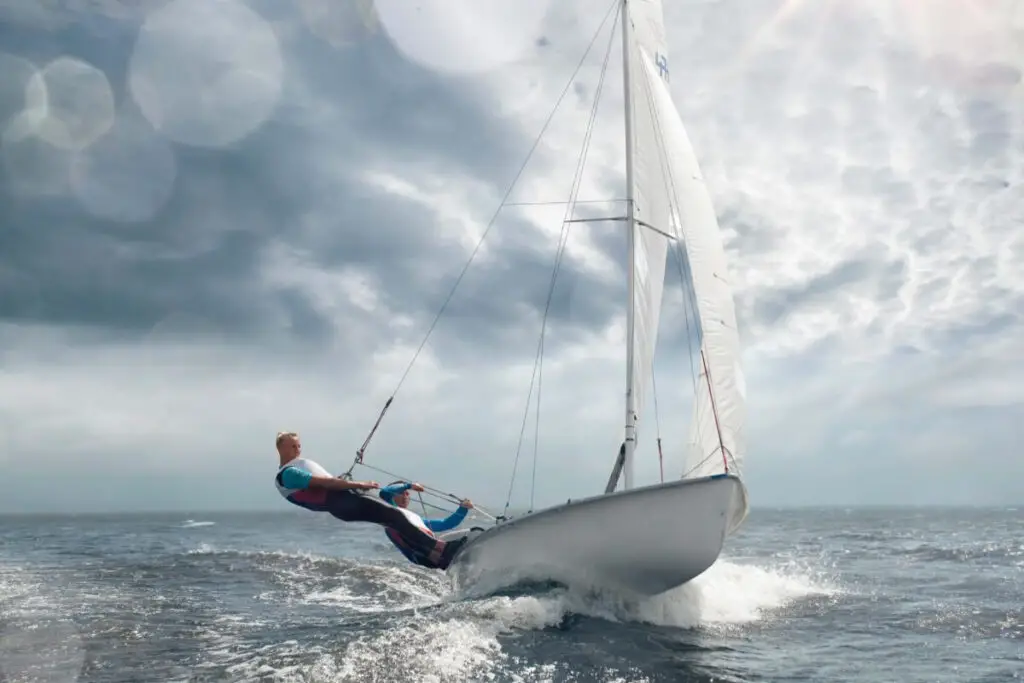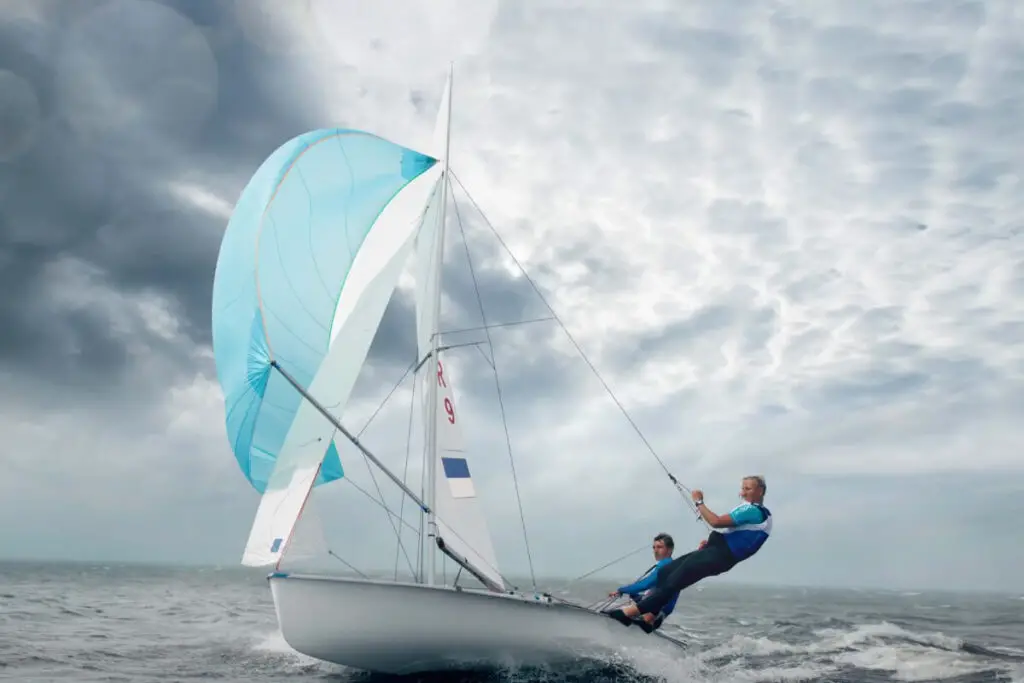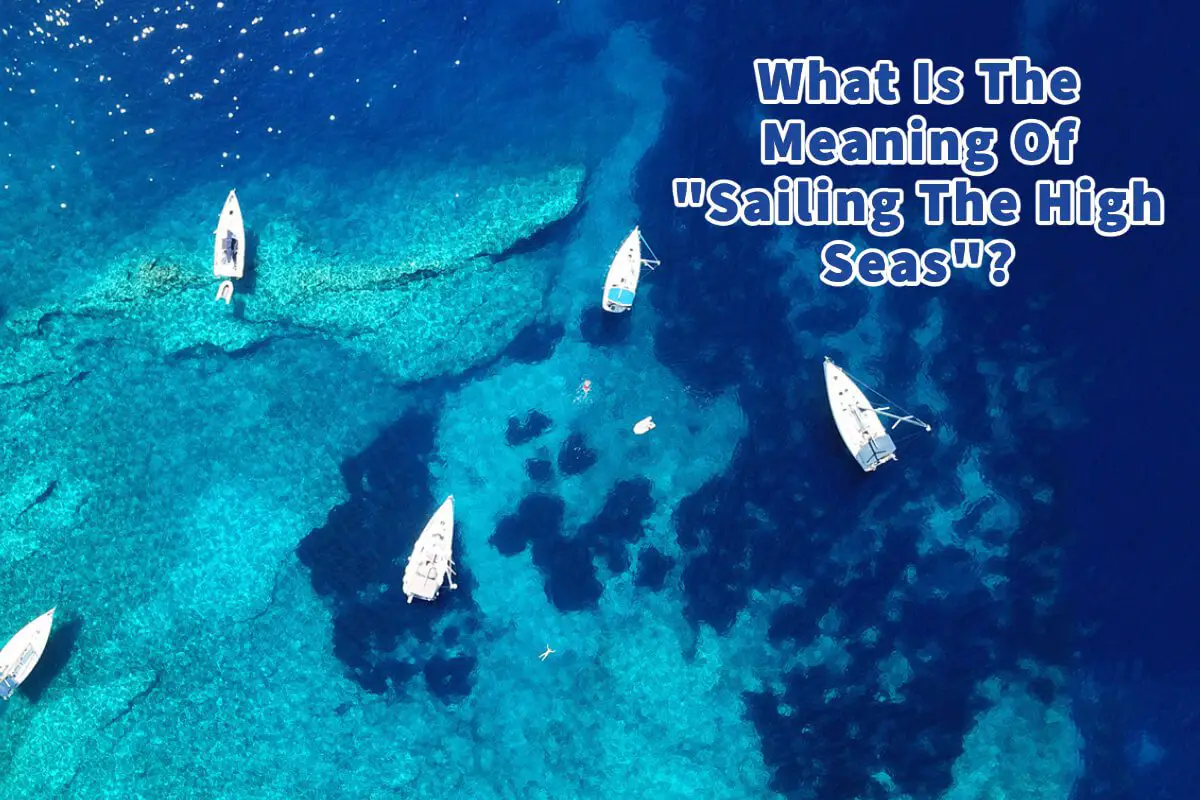Many times, you may hear this term sailing the high seas. I have always wondered exactly what that term means.
Sailing around the high seas means sailing an area of the ocean that is not controlled by any country or sovereignty. In other words, no one owns those seas when you get out in the middle of the ocean. Every nation is allowed to cross the high seas.
Table of Contents
- Meaning Of Sailing The High Seas
- Pirates And The High Seas
- 10 Reasons Why Sailing Is An Exhilarating Sport
- Related Questions
Meaning Of Sailing The High Seas
When somebody uses the term “sailing the high seas,” it means that it is an area of the ocean that is not controlled by any country. Most notably, we think about pirates roaming the high seas.
The Cambridge Dictionary defines the High Seas as:
“ The areas of the oceans that are not controlled by any country.”
Cambridge Dictionary
The high sea is a term that is under maritime law. It includes all the parts of the world’s ocean around the globe that are not considered part of any state’s territorial water or internal waters.
Sailing around the high seas means sailing in these bodies of water or water that essentially belong to no one. Legally, anyone can sail with all within these high sea waters, even the Pirates.
The high seas are vast bodies of water not part of any country or territory. So if someone is out there sailing the high seas, they are sailing bodies of water, not under any country, state, or region, but are sailing water uncontrolled and accessible to all.
Some Facts About Sailing The High Seas
As the high seas take up so much territory around the globe, it was interesting for us to understand a little bit about the high seas and precisely what it means to sail the high seas or travel on a boat around the high seas.

Here is some information about the high seas:
- Throughout the history of the world, the high seas were not claimed by any territory. However, during the European Middle Ages, several maritime states started claiming absolute sovereignty over large portions of the high sea. Here are two significant examples:
- Genoa claimed the Mediterranean Sea in the Middle Ages.
- Great Britain claimed the North Sea and elsewhere in the Middle Ages.
- There is a maritime doctrine that the high seas are open to all nations in times of peace and may not be subject to national sovereignty. This is known as freedom of the oceans and is an aspect of International Law. Freedom of the seas was proposed way back in 1609 by the Dutch Jurist Hugo Grotius but did not become a principle of international maritime law until the 19th Century.
- Freedom of the high seas is now recognized to include freedom of navigation, fishing, laying submarine cables and pipelines, and overflight seas for airplane travel.
- Today, the high seas continue to be an area of the world that is only regulated by maritime law and international agreements.
If you decide to sail on the high seas, you are certainly allowed to do so because the high seas areas of the world do not belong to any nation or a sovereign nation. It is a territory that is open to all, even the Pirates.
Pirates And The High Seas
Most people think about the high seas and pirates on the high seas. Pirates have existed since ancient times. However, the golden age of piracy was during the 17th and 18th centuries.
During the 17th and 18th centuries, more than 5,000 pirates were out on the high seas. The Pirates mainly targeted ships and launched attacks; the pirates also attacked coastal towns.
Many of these famous pirates had fearsome reputations and some exciting names. From 1650 to 1720, during the golden age of pirates, the more famous pirates included:
- Sir Henry Morgan (1635 to 1688) – He was a Welsh buccaneer who was most famous for plundering Spain’s Caribbean colonies during the late 17th Century.
- William “Captain” Kidd (1645 to 1701) – William Kidd, also known as Captain Kidd, was a Scottish-born pirate who roamed the high seas. In 1701, he was captured and hung in London for murder and piracy.
- “Calico” Jack or John Rackham (1682 to 1720) – Was an English pirate who operated in the Bahamas and Cuba in the early 18th Century. He had two female crew members, Mary Read and Anne Bonny.
- Bartholomew Roberts or Black Bart (1682 to 1722) – Bartholomew Roberts was a Welsh pirate and was considered one of the most successful pirates of his time. He raided ships off the Americans and West Africa and created a pirate code that included an early type of Skull and Crossbones flag.
- Blackbeard – Edward Teach (1680 – 1718) – Was an English pirate who operated around the West Indies and the North American Colonies (United States). He was known to be a shrewd and calculating leader who spurned the use of violence but was highly successful.
As you can see, pirates have long been on the high seas, looting ships and taking treasures. Many of these pirates that operated during the time of the golden age of pirates have been romanticized in many different movies and books.
Pirates on the high seas continue to be a problem in many parts of the world. Many aspects of Africa and Asia continue to have incidents of modern-day pirating on the high seas. These modern pirates have used the high seas for armed robbery, hijackings, kidnappings, and unauthorized ship boardings.
So, for centuries, people continued to sail around the high seas. Pirates have also sailed the high seas as the high sea is one area of the world that is not part of any single country or sovereign nation.
10 Reasons Why Sailing Is An Exhilarating Sport
Sailing isn’t just a sport; for many, including me, it’s a passion, a way of life. Whenever I set sail, it’s not merely about steering the boat but embracing the wind, waves, and the vast expanse of the water.

Here are ten reasons why sailing is such a fantastic sport and why it brings so much joy to those who indulge in it:
- Connection with Nature: Sailing offers a unique opportunity to be one with nature. For me, it’s a way to witness the beauty of the seascape, from the panoramic sunsets to the playful dolphins alongside the boat.
- Physical Exercise: Sailing is a full-body workout. From hoisting the sails to steering the boat, it engages various muscle groups, ensuring you stay fit and active.
- Mental Challenge: Sailing is as much a mental sport as it is a physical one. It requires strategic thinking, quick decision-making, and an understanding of the wind and waves. Every time I set out to sail, it’s a new puzzle waiting to be solved.
- Sense of Freedom: There’s an unparalleled sense of freedom when you’re out in the open sea with the wind in your sails. For me, it’s an escape from the hustle and bustle of daily life, a chance to breathe and just be.
- Teamwork and Bonding: While solo sailing is its own kind of thrill, sailing with a crew teaches teamwork and camaraderie. The shared experiences and challenges foster deep bonds.
- Versatility: Whether you’re into competitive racing or leisurely cruising, sailing caters to all. I’ve found that every sailing expedition, whether a calm day out or a thrilling race, has its charm.
- Skill Development: Sailing equips you with a myriad of skills. From learning the technical aspects of the boat to understanding weather patterns, the learning curve is continuous and rewarding.
- Eco-Friendly: Sailing is an eco-friendly sport in a world increasingly conscious about its carbon footprint. Powered by the wind, it’s a clean way to enjoy the outdoors.
- Adventurous: Every sailing trip is an adventure. For thrill-seekers like me, battling the waves, finding new shores, or even mastering a new maneuver brings unparalleled excitement.
- Pure Fun: At its core, sailing is just plain fun! The joy of feeling the breeze, the splash of water, and the sheer exhilaration of cruising through the waves is unmatched. Every time I sail, it reminds me of why I fell in love with the sport in the first place.
Sailing is more than just a sport. It’s an experience, a love affair with the water, and a dance with the wind. It’s no wonder I find it such a fantastic way to spend my time, and I believe many would feel the same once they give it a try.
At A Bus On A Dusty Road, we talk about everything about travel, life, sailing, and ex-pat living. We are all about “Living Life As A Global Citizen.” We explore social, cultural, and economic issues and travel.
We would love to have you be part of our community. Sign up for our newsletter to keep up-to-date by clicking here. If you have any questions, you can contact me, Anita, by clicking here.
Listen to our Podcast called Dusty Roads. You can find it on all major podcast platforms. Try out listening to one of our podcasts by clicking here.
Subscribe to our A Bus On A Dusty Road YouTube Channel with great videos and information by clicking here.
Related Questions
Which Sea Lies At One End Of The Great Wall Of China?
The Laolongtou or the Old Dragonhead, is part of the Shanhai Pass of the Great Wall of China that goes right into the Bohai Sea. Most people consider this to be the start of the Great Wall of China. The Shanghai pass has always been of crucial military significance for China as it helps to protect China’s important capitals, including Beijing.
By clicking here, you can discover Which Sea Lies At One End Of The Great Wall Of China?
All About England’s Rivers Flowing Into The English Channel
Several major English reverses flow into the English Channel. These rivers include River Avon, River Dart, River Ouse, and The Solent. All of these flow into the English Channel, a water body between England and the European mainland.
You can learn more by reading All About England’s Rivers Flowing Into The English Channel by clicking here.
How Long Did It Take to Build the Whole Great Wall of China?
The Great Wall of China took over 2,000 years to build. The building spans many Chinese Dynasties for about 22 centuries. The construction of the wall ended in the Ming Dynasty in 1644. The Great Wall is one of the most significant human-made construction projects globally; the Great Wall is over 21,196 kilometers or 13,171 miles. There are over 25,000 watchtowers scattered throughout the Great Wall structure.
To know more about How Long Did It Take to Build the Whole Great Wall of China? by clicking here.

